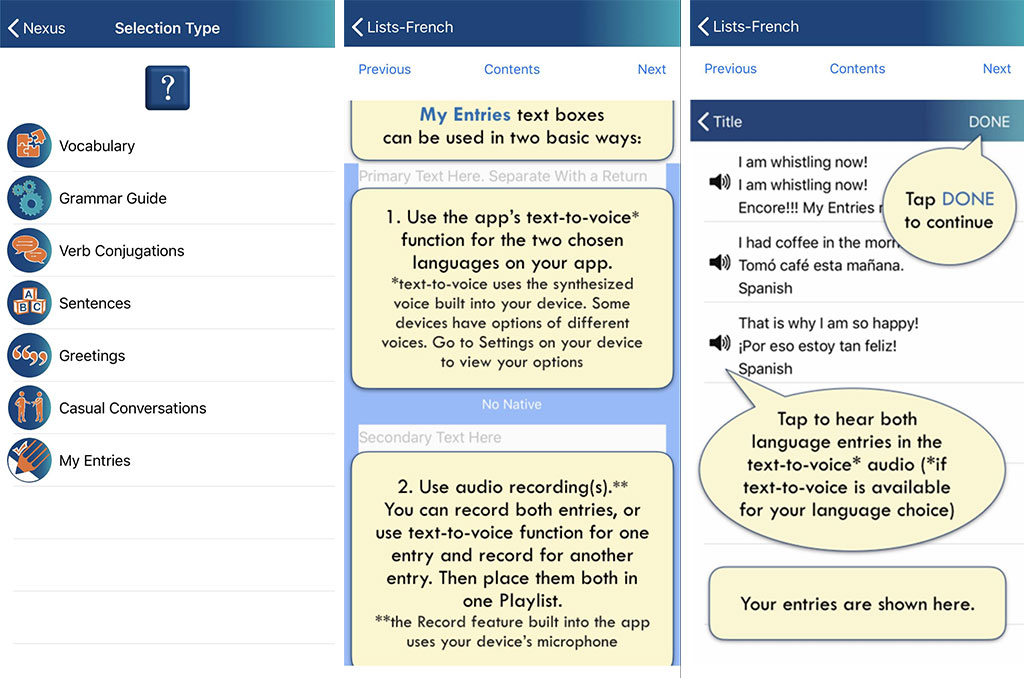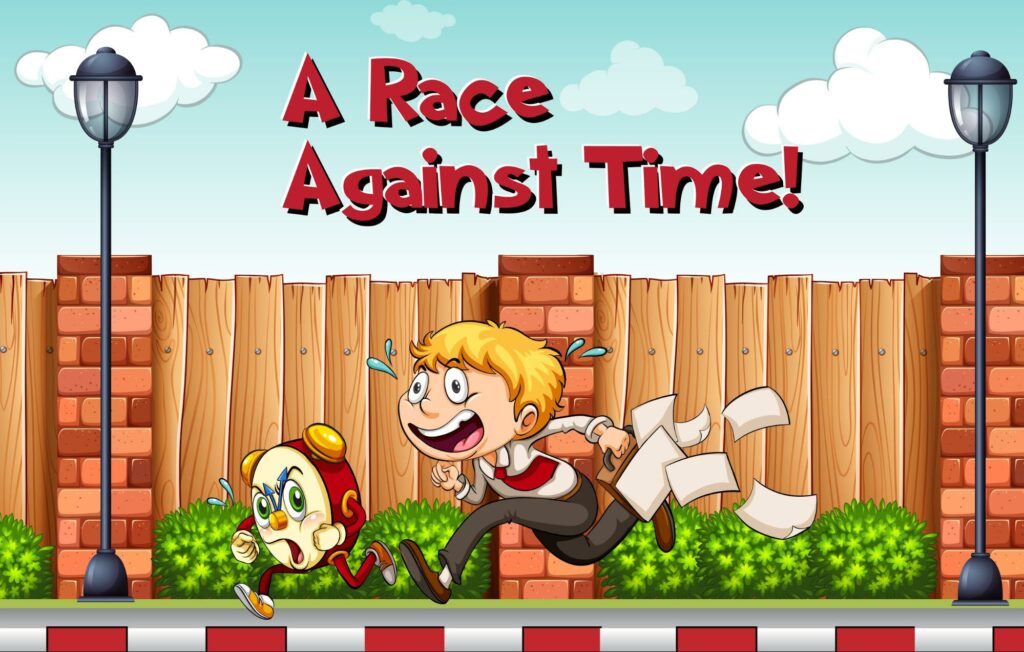What Is Figurative Language and Where It Is Often Used
It’s common knowledge among language learners that it’s much easier to read a children’s book than one intended for adult readers. But why? There are many different reasons, but one of them has to do with the much higher level of figurative language, which involves the use of various figures of speech for creative and dramatic purposes, in adult books.
If you’ve never heard the term figurative language and would like to know more about it because you want to improve as a language learner, this is the right article for you. By the end of it, you’ll know not only everything you need to know about figures of speech, but you’ll also understand exactly what you need to do to become better at understanding them.
What Is Figurative Language?
Figurative language is the opposite of literal language. Whereas literal language always means exactly what it says, figurative language uses various figures of speech to convey meaning in unusual and creative ways.

Here are three dictionary definitions of figurative language to help you understand what we mean:
- Language used to describe someone or something by comparing to another, or using words for description that do not have a literal meaning. (YourDictionary)
- Language that contains or uses figures of speech, especially metaphors. (Dictionary.com)
- Words and phrases used not with their basic meaning but with a more imaginative meaning, in order to create a special effect. (Cambridge Dictionary)
Because the meaning of figurative language is often not immediately clear, languages learners tend to struggle with it, feeling discouraged and unsure how to progress. In reality, the most effective way to master various figures of speech is to see them in use as often as possible.
To increase your exposure to figurative phrases, we recommend you add the examples below to the Encore!!! app. Encore’s My Entry feature allows you to include your own text and audio content, such as lines of poetry, dialogs from your favorite movies, song lyrics, or workbook content. You can then practice at your own pace at any time using your mobile device.

What Are Some Examples of Figurative Language?
To help you better understand what figurative language is and how it’s used, let’s take a look at some textbook examples:
- “Her lips are a blooming rose.” – This is an excellent example of figurative language that illustrates how the meaning of figurative language goes beyond the individual words. Here, the author is not saying that the woman in question literally has a blooming rose for lips (that would be terribly inconvenient). Instead, the author wants to say that her lips are as red (and as pretty) as a blooming rose.
- “They fought like cats and dogs.” – No, the people this sentence is referring to didn’t actually fight on their hands and knees, scratching and biting each other like cats and dogs, but they did fight with the same ferocity. The comparison to cats and dogs additionally suggests that the fight didn’t have a serious outcome, such as somebody ending up in the hospital.
- “The bag was heavy as a ton of bricks” – Saying that something is very heavy doesn’t really stimulate the imagination too much, does it? That’s why writers like to describe what they’re writing about by referring to something else. Of course, no bag literally weighs as much as a ton of bricks (or a ton of feathers for that matter), but a bag can be so heavy that it almost feels like it does.
- “He’s as slow as a turtle.” – The leatherback sea turtle can muster up a speed of up to 10 km/h, but that’s not the point of this sentence. Since we associate turtles with far more modest speeds, we can use a comparison to one to describe someone who’s exceptionally slow. This creates comedic imagery that’s far more entertaining than boring adverbs such as very or really.
- “I can smell the dinner from a mile away.” – Nobody can smell dinner from a mile away, but a mile is a pretty substantial distance, and it can be used in a figurative fashion for emphasis. This is actually one of the most common figurative language techniques because there’s an infinite number of opportunities to come up with descriptions that captivate, amuse, and stand out.
- “Justice is blind and, at times, deaf.” – Justice is an abstract idea—not a living human being with eyes and ears. However, that doesn’t stop us from talking about it as if it were. In this case, the author is telling us that justice isn’t perfect. If you search for songs with figurative language or, even better, poems with figurative language, you’re guaranteed to find many more examples similar to this one.
- “Love is a battlefield.” – The dictionary defines love as an intense feeling of deep affection and battlefield as the piece of ground on which a battle is or was fought. Clearly, love isn’t a battlefield in the literal sense, but it can feel like one, which is why it’s possible to figuratively say that love is a battlefield.
- “The car brakes screamed.” – Car brakes can make strange sounds, especially when worn out, but they can’t really scream, can they? Well, not in the literal sense because they don’t have a mouth, but such limitations don’t apply when using figurative phrases, which is exactly what figurative language examples like this one illustrate.
- “She took my breath away.” – While something might make us gasp in exclamation, clearly no one will be physically taking our breath from our body. If they were, we probably would not be able to express that fact after. We can feel figuratively breathless from a beautiful sight though, and while not literal it is a phrasing that we can understand.
- “He stole my thunder!” – Clearly, thunder is not something that can be stolen as it is a sound that originates from nature. However, the idea that someone can steal your idea and attention, is what is understood here. The sound of thunder gets noticed and someone stealing your thunder is taking that notice from you.

What Is the Purpose of Figurative Language?
If you’ve read the examples of figurative language above, you should be starting to understand its purpose. Arguably, the main reason why writers and speakers use various figures of speech is that they want to describe things in a less ordinary way.
Sometimes, it is used to avoid repetition, especially when it comes to words like very, really, a lot, big, small, and so on. It’s the mark of an inexperienced writer to use the same words over and over again instead of coming up with a more creative way to convey the intended meaning.
Why is figurative language used in music and poems, where repetition is often desired? In many cases, songwriters and poets use various figures of speech to create rhythm, musicality, and vivid imagery. The frequent use of figurative language in music and poems is the reason why they are so often open to interpretation.
What Are the 6 Types of Figurative Language?
There are many different types of figurative language, but the following six are used much more frequently than others, which is why it’s a good idea to know about them:
1. Metaphors
A metaphor is a figure of speech that involves the application of a word to an object or action to which the word is not literally applicable, which is why metaphors don’t make sense when interpreted literally and why so many learners struggle with them.
Here are three examples of metaphors:
- The world is your oyster. = You can achieve anything you want in life.
- Time is money. = Time is a valuable resource.
- You are my sunshine. = You make me very happy.
Instead of attempting to decipher the meaning of metaphors from the individual words they consist of, it’s better to learn them as complete units.
2. Similes
A simile is a figure of speech that involves the direct comparison of one thing with another thing of a different kind using words such as “like”, “as”, or “than”. As long as you know the meaning of the individual words a simile consists of, you should be able to understand it even if you’ve never seen or heard it before.
Here are three examples of similes:
- Brave as a lion. = Exceptionally brave.
- Strong as an ox. = Very strong.
- Boring like watching paint dry. = Really boring.
3. Personification
Personification involves the attribution of human-like qualities to animals or inanimate objects. It’s often used for a comedic effect, but it can also be used to help readers understand something they’re not familiar with.
Here are three examples of personification:
- Lightning danced across the sky. = The entire sky was lit up.
- The wind howled in the night. = The wind made a lot of noise.
- My alarm clock screams at me to get out of bed every morning. = My alarm clock always buzzes loudly.
4. Hyperbole
Out of all figurative language types, hyperbole, which is the use of exaggeration as a rhetorical device or figure of speech, rarely gives learners much trouble. That’s perhaps because we all make various hyperboles every single day, and we don’t often even realize that we do.
Here are three examples of hyperbole:
- This bag weighs a ton. = The bag is really heavy.
- This is the worst day of my life. = I’m having a really bad day.
- My dad will kill me when he comes home. = My dad will get very angry.
Do these examples look familiar? That’s because we all use similar hyperboles all the time.
5. Onomatopoeia
Onomatopoeia are words that phonetically imitate what they describe. This type of figurative language is commonly used in children’s books, but you can find it also in comic books, poems, songs, and just about everywhere else.
Here are three examples of onomatopoeia:
- Boom! = The sound of an explosion.
- Beep. = The sound emitted by a vehicle horn.
- Whack. = The sound of a sharp blow.
6. Idiom
Idioms are phrases whose meaning can’t be derived from the meaning of individual words. Many languages learners have described idioms as the bane of their existence because there’s so many of them, and learning them is anything but easy.

Here are three examples of idioms:
- You should keep your eye out for him. = You should watch carefully for him.
- It’s a piece of cake. = It’s easy.
- Let the cat out of the bag. = Give away a secret.
Conclusion
It’s not possible to master a language without understanding figurative expressions, which deviate from the conventional order and meaning. These expressions are important to master, while also being some of the most difficult aspects of a language to attain fluency in. Cultural knowledge is a vital part of being able to master the figurative phrases of a language as they are very much steeped in the underlying culture. The ways we experience these phrases are a part of our overall life experience, and the more you can understand the way these concepts relate, you can piece the words together effectively.
In this article, we’ve explained the main types of figurative language and provided plenty of examples that you can add to Encore!!! best language learning app for focused practice. Encore!!! allows you to gain that deep understanding needed to gain competency in these complex aspects of language.
FAQ about Figurative Language
1. How do you identify figurative language?
Figurative expressions in language are identifiable by their use of not literal ideas and phrases. They use more imaginative meanings of words to compare or describe things in a more expressive way.
2. How is figurative language used in writing?
When a writer is looking for a more creative way to express an idea or avoid repetition, they may use a figurative phrasing instead. It can also add more color or rhythm to a bit of writing, while creating vivid imagery for the reader. Sometimes, it also serves to put foriegn concepts into familiar terms.
3. What is the difference between imagery and figurative language?
Imagely is using descriptive language to appeal to and engage the senses, while figurative language is using words or expressions that differ from the literal interpretation. They can serve the same purpose, but do so in different ways.
4. How do you teach figurative language?
Learning about the culture of a language can help to learn the meanings of figurative imagery. Using learning tools that help with visualization such as pictures can also help to understand figurative phrases too.

